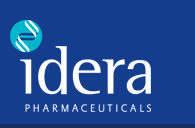预约演示
更新于:2025-05-07
TLR9 x TLR7 x TLR8
更新于:2025-05-07
关联
6
项与 TLR9 x TLR7 x TLR8 相关的药物作用机制 TLR7拮抗剂 [+2] |
在研机构 |
原研机构 |
非在研适应症- |
最高研发阶段临床前 |
首次获批国家/地区- |
首次获批日期1800-01-20 |
作用机制 TLR7拮抗剂 [+2] |
在研适应症 |
非在研适应症- |
最高研发阶段药物发现 |
首次获批国家/地区- |
首次获批日期1800-01-20 |
7
项与 TLR9 x TLR7 x TLR8 相关的临床试验EUCTR2015-003277-15-GB
A Phase 2, Randomized, Double-Blind, Placebo-Controlled Trial of IMO-8400 in Patients with Dermatomyositis
开始日期2016-09-02 |
申办/合作机构 |
NCT02612857
A Phase 2, Randomized, Double-Blind, Placebo-Controlled Trial of IMO-8400 in Patients With Dermatomyositis
The purpose of this study is to determine how safe and effective IMO-8400 is in adults with dermatomyositis.
开始日期2015-11-01 |
申办/合作机构 |
NCT02363439
An Extension Study to Evaluate the Long-Term Safety, Tolerability, and Clinical Activity of IMO-8400 in Patients With Relapsed or Refractory Waldenström's Macroglobulinemia Who Completed Study 8400-401
An extension study for patients who complete 24 weeks of IMO-8400 on study 8400-401.
开始日期2014-11-01 |
申办/合作机构 |
100 项与 TLR9 x TLR7 x TLR8 相关的临床结果
登录后查看更多信息
100 项与 TLR9 x TLR7 x TLR8 相关的转化医学
登录后查看更多信息
0 项与 TLR9 x TLR7 x TLR8 相关的专利(医药)
登录后查看更多信息
313
项与 TLR9 x TLR7 x TLR8 相关的文献(医药)2025-03-01·Immunobiology
Toll-like receptor upregulation in liver and peripheral blood mononuclear cells of patients with amoebic liver abscess
Article
作者: Kaur, Upninder ; Duseja, Ajay ; Kalra, Naveen ; Sehgal, Rakesh ; Sharma, Navneet ; Mewara, Abhishek ; Ray, Pallab ; Khunger, Sandhya
2024-12-21·Biological and Pharmaceutical Bulletin
Amodiaquine Analogs Are Potent Inhibitors of Interleukin-6 Production Induced by Activation of Toll-Like Receptors Recognizing Pathogen Nucleic Acids
Article
作者: Kitabatake, Kazuki ; Morita, Tomoe ; Tanaka, Tomohiro ; Takenaka, Yohei ; Tsukimoto, Mitsutoshi ; Kanbe, Azusa ; Otaki, Shotaro ; Aoki, Shin ; Nakamura, Koki ; Tojo, Toshifumi ; Yokoi, Kenta ; Sekiguchi, Saki ; Uchiumi, Fumiaki ; Satoh, Hidetoshi
2024-12-01·Current Opinion in Immunology
The path ahead for understanding Toll-like receptor-driven systemic autoimmunity
Review
作者: Barton, Gregory M ; Hamerman, Jessica A
38
项与 TLR9 x TLR7 x TLR8 相关的新闻(医药)2025-04-06
文章围绕 Toll 样受体(TLR)激动剂在癌症疫苗中的应用展开,介绍了 TLR 的分类、功能、配体及合成激动剂,并阐述其在临床前和临床试验中的研究进展。癌症免疫疗法与 Toll 样受体概述癌症免疫疗法:癌症免疫疗法是治疗癌症的新兴策略,其中癌症疫苗属于主动免疫疗法,但多数癌症疫苗单药治疗效果不佳。这是因为其抗原靶点多为 “自我” 蛋白,机体存在免疫耐受,且肿瘤微环境具有免疫抑制性。为提高疗效,可采用靶向肿瘤特异性抗原、联合免疫检查点阻断剂等方法,使用免疫刺激佐剂也是重要途径之一。Toll 样受体(TLR):TLR 是模式识别受体中最大的家族,能识别病原体相关分子模式(PAMPs)或损伤相关分子模式(DAMPs),激活先天免疫反应,进而促进适应性免疫反应。不同的 TLR 在细胞表达模式、识别的配体及激活的信号通路等方面存在差异,这使其激动剂有望作为疫苗佐剂优化免疫反应。Toll 样受体的分类与功能TLR2:1998 年被发现,表达于多种免疫细胞及内皮、上皮细胞表面。可被多种分子激活,形成同源或异源二聚体,激活后招募 MyD88,促使 NFκB 活化,诱导促炎细胞因子和趋化因子产生,刺激树突状细胞分泌细胞因子并表达共刺激分子。常用的合成激动剂有 Pam2CSK4 和 Pam3CSK4 等。TLR3:2001 年被确定为首个抗病毒 TLR,在免疫和非免疫细胞中广泛表达,定位于细胞内细胞器,识别双链 RNA(dsRNA)。激活后通过 TRIF 通路分泌细胞因子和趋化因子,促进抗原呈递和 Th1 反应。合成激动剂包括 Poly(I:C)及其修饰产物等。TLR4:是果蝇 Toll 蛋白的人类同源物,主要表达于髓系细胞、上皮细胞和内皮细胞的质膜上,识别脂多糖(LPS)。激活后通过 MyD88 依赖和非依赖途径上调促炎细胞因子分泌,TNFα 是关键诱导分子。基于脂质 A 结构开发的合成激动剂有 MPLA、GLA 等。TLR5:1998 年被发现,识别细菌鞭毛蛋白,表达于多种免疫细胞及呼吸道、胃肠道上皮细胞。激活后招募 MyD88,促使细胞分泌 IL - 8 和促炎细胞因子。但因其激活可能引发过度免疫反应,开发其激动剂需精确调控免疫反应。TLR7/8:2000 年被发现,对富含嘌呤的单链 RNA(ssRNA)有反应。TLR7 主要在浆细胞样树突状细胞(pDCs)中表达,TLR8 主要在髓系树突状细胞中表达。激活后均通过 MyD88 依赖途径,分别诱导 I 型干扰素和激活 NFκB 信号通路。咪唑喹啉类等是常见的激动剂。TLR9:2000 年被识别,位于内体膜,识别未甲基化的 CpG 基序。主要表达于 pDCs 和 B 细胞,激活后通过 MyD88 依赖途径上调促炎细胞因子和共刺激分子表达,促进 pDCs、NK 细胞和 B 细胞成熟。合成激动剂根据化学结构分为 A、B、C、P 四类。TLR10:2001 年被首次报道,在人体组织中表达差异大,主要存在于次级淋巴器官。与 TLR1 和 TLR6 关系密切,配体和功能存在争议,其同源二聚化可诱导抗炎细胞因子 IL - 1Ra 产生。TLR11、TLR12 和 TLR13:仅在小鼠中发现,主要表达于免疫细胞的细胞内细胞器,形成同源或异源二聚体,分别识别原肌球蛋白、鞭毛蛋白和细菌 23S rRNA,激活后招募 MyD88,促使 DCs 活化并产生 IL - 12。临床前研究TLR2 激动剂:在动物模型中,TLR2 激动剂可提升癌症疫苗疗效,如增强肿瘤特异性 T 细胞浸润、抑制肿瘤生长、提高生存率。将其与疫苗抗原结合,能增强树突状细胞对疫苗的摄取,提高免疫原性。但与其他类型癌症疫苗联合使用的协同作用仍需进一步研究。TLR3 激动剂:刺激 TLR3 可诱导 I 型干扰素反应,多种 TLR3 激动剂作为癌症疫苗佐剂进行了研究。它们能促进树突状细胞成熟,增加肿瘤特异性 CD8+ T 细胞浸润,抑制肿瘤生长,诱导持久的抗肿瘤免疫。改进递送方式可进一步提高其作为佐剂的效果。TLR4 激动剂:研究广泛,在多种肿瘤模型中,TLR4 激动剂可改变肿瘤微环境免疫细胞浸润情况,抑制肿瘤进展。合成激动剂如 MPLA 等,通过纳米结构递送可增强肿瘤抗原的免疫原性,诱导强大的抗肿瘤效应。TLR7/8 激动剂:能增强癌症疫苗疗效,诱导树突状细胞活化和成熟,促进肿瘤特异性 T 细胞增殖,抑制肿瘤生长。对其进行修饰或与疫苗抗原结合,可增强疫苗的抗肿瘤反应,产生持久的抗原特异性 CD8+ T 细胞。TLR9 激动剂:激活后可活化细胞毒性 T 细胞,提高疫苗介导的抗肿瘤免疫力。新型递送策略能增强其摄取,促进肿瘤特异性 T 细胞浸润,抑制肿瘤生长,产生长效记忆 T 细胞。临床试验蛋白疫苗:多项使用 TLR 激动剂作为佐剂的蛋白疫苗临床试验表明,其可增强抗原特异性 CD4 + 和 CD8+ T 细胞免疫反应,且安全性良好。如针对 NY - ESO - 1 蛋白的疫苗,联合不同 TLR 激动剂能有效激活免疫细胞,提高免疫反应。肽疫苗:TLR 激动剂与肽疫苗联合使用,可提高肽疫苗的免疫原性,增加抗原特异性 T 细胞频率,诱导免疫相关基因表达。但部分试验显示临床疗效较低,免疫原性不足。问题与展望:当前临床试验多为小规模研究,主要评估安全性和免疫反应,缺乏对临床疗效的评估。未来需开展更大规模的研究,评估不同类型癌症中 TLR 激动剂作为佐剂的效果,探索其与免疫检查点阻断剂等联合治疗的可能性,评估其在核酸疫苗中的应用潜力。结论:癌症疫苗联合 TLR 激动剂具有增强抗肿瘤免疫反应的潜力。临床前研究表明,TLR 激动剂可促进免疫细胞成熟,增强 T 细胞活性。临床试验显示其安全性良好,能增强抗原特异性 T 细胞反应,但仍需更多研究来优化其应用,以提高癌症疫苗的疗效。识别微信二维码,添加生物制品圈小编,符合条件者即可加入生物制品微信群!请注明:姓名+研究方向!版权声明本公众号所有转载文章系出于传递更多信息之目的,且明确注明来源和作者,不希望被转载的媒体或个人可与我们联系(cbplib@163.com),我们将立即进行删除处理。所有文章仅代表作者观不本站。
免疫疗法疫苗
2025-03-29
·医药速览
前言Toll样受体(TLRs)是一种先天免疫受体,直接或间接负责检测病原体相关分子模式(PAMP),并通过激活先天和适应性免疫途径对其作出反应。TLRs是抵御微生物病原体的第一道防线,TLR可以分为细胞表面和内体亚家族,识别不同的PAMP,并激活常见和特定的信号通路以形成免疫反应。尽管具有保护功能,TLR的异常反应仍会导致炎症和自身免疫性疾病。了解TLR激活和调节机制之间的微妙平衡对于破译它们在免疫防御和疾病发病机制中的双重作用至关重要。此外,天然存在和合成的TLR激动剂可以利用这些内源性免疫信号通路来增强和调节疫苗反应,从而使其成为优良的疫苗佐剂。这不仅对开发针对传染病的疫苗具有重要意义,而且对针对癌症、过敏、阿尔茨海默病和其他疾病的免疫疗法也具有重要意义。TLR的发现史1989年,Charles A. Janeway提出了一个突破性的假设,表示先天免疫系统具有通过主要在哨兵细胞上表达的受体检测微生物感染的显著能力,称之为“模式识别受体(PRRs)”。这些受体识别称为“病原体相关分子模式”的不同分子结构,这些结构在病原体中广泛表达,对其生存至关重要,但在宿主细胞中明显缺失。这使得PRRs能够有效地区分自我和非自我,并启动先天免疫反应。1996年,Hoffmann等人进行的一项研究证实了Janeway的假设。该研究表明,果蝇携带一种名为“Toll”的受体突变,由于抗真菌肽的诱导缺陷,对真菌感染表现出更高的易感性。随后,Janeway和Medzhitov的进一步探索鉴定出了Toll的人类同源物,最初称为hToll,后来被确认为Toll样受体4(TLR4)。TLR4的发现揭示了它通过激活转录因子核因子κB(NF-κB)诱导先天反应的能力,包括产生促炎细胞因子和表达共刺激分子。随后,在人类和小鼠中分别鉴定出10个和12个TLR,每个TLR都能识别多种PAMP。TLR1至TLR9在两个物种中都是保守的;由于逆转录病毒衍生的DNA插入,小鼠TLR10不起作用;TLR11、TLR12和TLR13不存在于人类基因组中。TLRs的发现推翻了人们最早的认识,即先天免疫系统识别病原体是非特异性的。TLR的结构和信号通路TLR属于I型跨膜蛋白,包括负责PAMP识别的富含亮氨酸重复序列(LRR)的外结构域、跨膜区和激活下游信号通路的细胞质Toll-IL-1受体(TIR)结构域。TLR分为细胞表面和内体亚家族:细胞表面TLR(TLR1、TLR2、TLR4和TLR5)识别脂质和蛋白质成分,而内体TLR(TLR3、TLR7、TLR8、TLR9和TLR13)专门用于核酸检测;即脂多糖(TLR4)、脂肽(TLR2与TLR6或TLR1)、鞭毛蛋白(TLR5)、单链RNA(TLR7/8)、双链RNA(TLR3)和含CpG基序的DNA(TLR9)。TLRs激活的免疫反应类型由特定TLR及其衔接蛋白激活的信号通路决定。一般来说,大多数TLR途径导致Th1免疫反应,但TLR2除外,可能由于TLR2配体的多样性,TLR2可以诱导促炎和抗炎途径,导致Th1、Th0或Th2免疫反应。除TLR3外,大多数TLR通过MyD88发挥作用。TLR激活后,MyD88募集由IL1受体相关激酶(IRAK)1、IRAK2和IRAK 4组成的寡聚复合物,并激活MyD88 TNF受体相关因子6(TRAF6)。活化的TRAF6随后触发核因子κB(NF-κB)和丝裂原活化蛋白激酶(MAPK)途径,从而诱导促炎细胞因子,如IL-12和TNF-α。TLR7和TLR9可以激活TRAF3磷酸化干扰素调节因子7(IRF7),从而产生IFN-α。此外,TLR3和TLR4已被证明通过其TRIF衔接蛋白募集TRAF3来诱导IFN-β的产生,从而激活IRF3。I型IFN应答可诱导强Th1细胞/细胞毒性T细胞(CTL)应答,该应答对鉴定和清除感染或癌细胞很重要。TLR2受体主要诱导以高IL-10产生和低IL-12为特征的强Th2免疫反应。TLR并不专门触发Th1或Th2途径,而是可以影响多种途径。正是信号事件的平衡决定了免疫偏向。例如,一项研究表明,TLR4和TLR2激动剂的激活可以通过p38 MAPK和ERK1/2-FOS途径刺激信号传导,分别导致IL-12或IL-10的产生;然而,TLR4在比TLR2更高的阈值下诱导p38 MAPK信号传导,而TLR2在比TLR4更高的阈下诱导ERK1/2信号传导,导致免疫极化。TLRs在适应性免疫中的作用TLRs协调了从免疫细胞迁移到增强抗体亲和力成熟的许多功能。TLRs作为危险信号传感器,增加了免疫细胞向疫苗给药部位的运输。TLR参与可增强I类和II类MHC分子的抗原捕获、处理和呈递。某些特定类型的TLR可以不同程度地影响抗原的交叉呈递,从而TLR3或TLR4,而不是TLR2或TLR7/8配体,减少CD8 +T细胞对抗原的摄取和交叉呈递。TLR激活也可导致共刺激分子(如CD80和CD86)的上调,这对APC启动幼稚T细胞至关重要。DC细胞的TLR在自我/非自我抗原识别以及是产生免疫反应还是免疫耐受中起着关键作用。不同类型的APC表达不同的TLR,例如髓系DC表达TLR2和TLR4,而浆细胞样DC(pDC)表达TRL7和TLR9。因此,TLR对不同DC谱系的优先激活可以影响随后的免疫偏向。与小鼠相比,TLR在B细胞上的表达在人类中更为有限,人类主要表达TLR 2、7、9、10,TLR2配体需要通过B细胞受体(BCR)和TLR7的交联进行额外增敏,TLR7需要1型干扰素(IFN)引发。这些TLR激动剂在体外诱导B细胞的增殖、活化和分化。最初,人们认为TLRs只促进B细胞的卵泡外反应,其特征是快速产生低亲和力抗体;然而,最近的研究表明,TLRs也可以增强生发中心反应,从而产生高亲和力抗体。TLR与BCR协同作用,诱导类转换重组和抗体反应的成熟。TLR4还增强了B细胞向引流淋巴结的迁移,并在此过程中加快了抗体类别的转换。不适宜的B细胞TLR信号传导与自身反应性B细胞和自身免疫性疾病的产生有关;因此,在疫苗配方中避免过度的TLR刺激非常重要。TLR也已被证明能增强各种不同的T细胞亚群。几项研究表明,TLRs可以作为CD8+T细胞的共刺激分子,促进细胞增殖/存活、效应器功能、细胞因子产生和记忆形成的增加。TLRs在Treg细胞中的作用仍然存在争议。几项研究表明,TLR2激动剂可诱导Treg抑制活性的暂时丧失;而其他研究表明,尽管TLR2激动剂可增加抗原特异性增殖,但Treg细胞仍保留其抑制功能。TLR在疫苗佐剂中的应用天然存在和合成的TLR激动剂可以利用这些内源性免疫信号通路来增强和调节疫苗反应,从而使其成为优良的疫苗佐剂。疫苗配方中使用的TLR激动剂有多种形式,从脂肽到单链DNA和RNA。下面介绍TLR佐剂的主要类别。TLR2TLR2在多种细胞表面表达,包括单核细胞、巨噬细胞、内皮细胞、上皮细胞、自然杀伤细胞、树突状细胞、髓系抑制细胞、血小板和肥大细胞。TLR2识别的PAMP库是最广泛的,因为它能够与TLR1和TLR6(以及人类中的TLR10)形成异二聚体。TLR2佐剂的范围很广,包括合成脂肽(PAM3CSK4和PAM2CSK4)、阿拉伯甘露糖脂、脂磷壁酸、GPI膜锚定物、酵母多糖和肽聚糖。近年来TLR2研究的主要趋势包括发现小型合成TLR2激动剂、改进传统TLR2激动物的特性以及TLR2与疫苗抗原的生物偶联。例如,XS15(PAM3CS-GDPKHPKSF)是一种新的基于PAM3CS的TLR-1/2激动剂,其中PAM3CSK4的四赖氨酸(K4)被九肽(GDPKHPKSF)取代,以改变偶联物的水溶性,不仅促进摄取,而且易于纯化。使用TLR2激动剂作为佐剂的局限性包括大多数配体的大小、复杂性和疏水性。TLR3TLR3是一种细胞内识别系统,对病毒核酸(dsRNA、ssRNA和ssDNA)以及内源性双链RNA作出反应。已经开发了许多TLR3激动剂,如RGC100和ARNAX,一种合成的DNA-RNA杂交化合物。然而,在过去两年中,研究人员又回到了使用传统的dsRNA模拟配体,如poly IC,重点是改进其递送模式和新的疾病应用。TLR4TLR4是TLR家族中研究最多的成员,它识别脂多糖(LPS)。TLR4位于质膜上,主要在髓系细胞上表达,而pDCs和幼稚B细胞不表达。TLR4通过其共受体骨髓分化因子-2(MD-2)和CD14识别LPS。最近关于TLR4激动剂的工作集中在修饰产物的开发和评估上,如单磷酸脂质A(MPLA)和吡喃葡萄糖脂质A(GLA),它们在结构上与LPS相关,但没有高致热原性并保持强免疫增强特性,从而增加了其临床应用的可行性。TLR5TLR5识别鞭毛蛋白,并在上皮细胞和免疫细胞(如巨噬细胞和未成熟DC)上表达,通过MyD88依赖性信号通路产生免疫反应。最近关于TLR5激动剂的工作主要集中在提高耐受性上。不幸的是,鞭毛蛋白会诱导不必要的过度反应原性,作为一种蛋白质,它可以诱导针对自身的抗体,干扰其作为佐剂的功能。有研究通过从鞭毛蛋白中去除B细胞表位区域解决了这一问题,脱免疫的鞭毛蛋白保留了其TLR5佐剂活性。TLR7/8TLR7和TLR8位于免疫细胞的内涵体膜上。TLR7主要在pDC和B细胞中表达,而TLR8在髓系树突状细胞、单核细胞中表达,在pDC中表达程度较低。TLR7/8识别单链核糖核酸(ssRNA),并通过MyD88依赖性途径发出信号。在天然配体中,富含腺苷和尿苷的寡核苷酸(ORN)能够激活TLR8,而对TLR7没有任何影响,而富含鸟苷的ORN激活TLR7和TLR8依赖性信号传导。TLR7以单体形式存在,并在配体存在下二聚,而TLR8以天然存在的弱二聚体存在,在配体结合时发生构象变化。目前已发现15种以上的新型杂环分子,如咪唑喹啉、蝶呤、嘧啶、吡啶嘧啶、吡咯嘧啶和苯并咪唑,被鉴定为TLR7/8激动剂。TLR7/8激动剂的一个常见缺点是反应原性,近年来,有大量研究试图克服这些副作用。将TLR7/8激动剂封装在基于阳离子DOEPC的脂质体制剂纳米颗粒中,或将这些小分子共价连接到超支化聚合物上,可以避免其有害的系统反应,同时保持其对体液免疫的影响。TLR9TLR9在细胞内定位于内涵体膜中,识别细菌和病毒DNA的单链非甲基化CpG寡核苷酸。TLR9在免疫细胞上表达,如树突状细胞、巨噬细胞、自然杀伤细胞和其他APC。合成CpG序列可用作TLR9激动剂,以增强疫苗的免疫反应,并且每种独特的序列变异组合已被证明具有不同的结构和生物学特性。TLR9激动剂在过去两年中的最新发展主要集中在CpG向细胞的有效递送和摄取上。例如,一项研究介绍了一种将CpG-ODN偶联到新型阳离子脂质体上的新方法,该复合物能够在低抗原和佐剂剂量下诱导强烈的免疫反应。组合TLR佐剂将不同TLR的激动剂组合在单一疫苗中产生协同效应,可以驱动强大的疫苗免疫反应。例如,包含1V270(TLR7激动剂)和2B182C(TLR4激动剂)的脂质体佐剂诱导了针对流感的平衡的抗HA和抗NA IgG1和IgG2a反应,而没有Th1促炎反应常见的过度反应原性。类似地,一项研究评估了卵清蛋白(OVA)与两到三种TLR配体的十种独特组合的共包封,包括Pam3CSK4(TLR2激动剂)、MPLA(TLR4激动剂),咪喹莫特(TLR7/8激动剂)和CpG(TLR9激动剂),而三重组合以总体平衡的Th1/Th2应答促进抗原特异性抗体滴度。因此,TLR佐剂的组合可以提供广泛的定制免疫反应。TLR激动剂与其他PAMP如NOD2和巨噬细胞诱导型Ca²的组合⁺-依赖性凝集素受体(Mincle)配体也很有前景。共价连接CL239(TLR7激动剂)和胞壁酰二肽(NOD2激动剂),并将双激动剂作为纳米颗粒与NP-p24 HIV疫苗结合,协同作用增强了对小鼠的保护。小结TLR的发现大大增强了我们对先天免疫反应分子机制的理解,为创新的治疗方法和疫苗开发奠定了基础。靶向TLR的合成激动剂已被证明是非常有利的佐剂,相反,TLR拮抗剂对于减轻过度免疫反应具有重要价值,从而有助于治疗以TLR异常激活为特征的自身免疫性疾病。然而,关于单个TLR的特异性以及与其他PRR的潜在冗余问题仍然存在。微生物核酸被内体TLR和细胞质PRR识别,这确保了先天免疫系统能够通过不同细胞隔室中的多个PRR对各种病原体做出有效反应。TLR和PRR之间的相互作用是强有力地诱导免疫反应所必需的,这些PRR的激动剂的组合通过激活DC协同增强佐剂疗效。鉴于微生物病原体含有多种PAMP,这种协同作用可能在感染过程中自然发生,这可能解释了为什么与疫苗接种相比,自然感染通常会诱导更强的适应性免疫反应。然而,这种协同作用也可能与炎症性疾病的加重有关。因此,了解TLR和其他PRR之间的协同作用和相互作用机制对于开发先进的疫苗佐剂以及控制TLR相关疾病的药物至关重要。参考文献:1.Toll-like receptor (TLR) agonists as a driving force behind next-generation vaccine adjuvants and cancer therapeutics. Curr Opin Chem Biol.2022 Oct;70:1021722. Decoding Toll-like receptors: Recent insights and perspectives in innate immunity. Immunity.2024 Apr 9;57(4):649-673.推文用于传递知识,如因版权等有疑问,请于本文刊发30日内联系医药速览。原创内容未经授权,禁止转载至其他平台。有问题可发邮件至yong_wang@pku.edu.cn获取更多信息。©2021 医药速览 保留所有权利往期链接“小小疫苗”养成记 | 医药公司管线盘点 人人学懂免疫学| 人人学懂免疫学(语音版) 综述文章解读 | 文献略读 | 医学科普|医药前沿笔记PROTAC技术| 抗体药物| 抗体药物偶联-ADC核酸疫苗 | CAR技术| 化学生物学温馨提示医药速览公众号目前已经有近12个交流群(好学,有趣且奔波于医药圈人才聚集于此)。进群加作者微信(yiyaoxueshu666)或者扫描公众号二维码添加作者,备注“姓名/昵称-企业/高校-具体研究领域/专业”,此群仅为科研交流群,非诚勿扰。简单操作即可星标⭐️医药速览,第一时间收到我们的推送①点击标题下方“医药速览” ②至右上角“...” ③点击“设为星标
疫苗免疫疗法临床研究
2025-03-02
2025年2月24日,上海交通大学医学院附属瑞金医院和丹麦赫尔辛基大学的研究团队在期刊《Nature Communications》上合作发表了题为“Identification of splenic IRF7 as a nanotherapy target for tele-conditioning myocardial reperfusion injury”的研究论文。
2025年2月24日,上海交通大学医学院附属瑞金医院和丹麦赫尔辛基大学的研究团队在期刊《Nature Communications》上合作发表了题为“Identification of splenic IRF7 as a nanotherapy target for tele-conditioning myocardial reperfusion injury”的研究论文。
https://www-nature-com.libproxy1.nus.edu.sg/articles/s41467-025-57048-6
https://www-nature-com.libproxy1.nus.edu.sg/articles/s41467-025-57048-6
在这项研究中,研究人员通过开辟另一条途径,将纳米药物重新定向到脾脏,利用其作为远程调节或远程调节心肌再灌注损伤的高效和靶向部位的潜力,重振心血管纳米疗法。
在这项研究中,研究人员通过开辟另一条途径,将纳米药物重新定向到脾脏,利用其作为远程调节或远程调节心肌再灌注损伤的高效和靶向部位的潜力,重振心血管纳米疗法。
研究结果揭示了脾脏在心肌再灌注损伤中的远程调节作用,特别是IRF7作为关键靶点的发现,以及通过纳米技术实现精准干预的创新策略。
研究结果揭示了脾脏在心肌再灌注损伤中的远程调节作用,特别是IRF7作为关键靶点的发现,以及通过纳米技术实现精准干预的创新策略。
01
01
研究背景
研究背景
以前的研究,包括团队自己的研究,都试图利用免疫细胞作为天然载体,渗透和定位到病变部位的内在能力,来促进NPs的心脏滋养功能。在所有白细胞中,作为潜在 “靶框架 ”的单核细胞因其高流动性、先天性吞噬倾向和广泛参与免疫反应调节而受到越来越多的关注。然而,循环中单核细胞的数量是高度动态的,仅占血液白细胞总数的2-8%。此外,驻留在MPS或单核细胞储库中的单核细胞数量超过其在血液池中的同等数量,并且在受到创伤性挑战时不断被激活和动员。这些特点加上MPS对NPs的自发封存,使MPS成为最大限度发挥单核细胞靶向纳米疗法治疗潜力的有利替代功能位点。然而,要利用这种策略,需要解决两个基本问题。虽然之前的研究已经确定脾脏是急性心肌梗死(MI)时的主要单核细胞库,但对心肌缺血再灌注(IR)的研究相对较少,而IR与心肌梗死的病理和生物学特征截然不同。其次,单纯采用 “抗炎 ”概念的广泛治疗策略对心肌缺血再灌注的治疗效果不佳;因此,进一步了解如何有选择性地针对破坏性因素,同时保持有益的免疫平衡,可能会产生更有希望的结果。
以前的研究,包括团队自己的研究,都试图利用免疫细胞作为天然载体,渗透和定位到病变部位的内在能力,来促进NPs的心脏滋养功能。在所有白细胞中,作为潜在 “靶框架 ”的单核细胞因其高流动性、先天性吞噬倾向和广泛参与免疫反应调节而受到越来越多的关注。然而,循环中单核细胞的数量是高度动态的,仅占血液白细胞总数的2-8%。此外,驻留在MPS或单核细胞储库中的单核细胞数量超过其在血液池中的同等数量,并且在受到创伤性挑战时不断被激活和动员。这些特点加上MPS对NPs的自发封存,使MPS成为最大限度发挥单核细胞靶向纳米疗法治疗潜力的有利替代功能位点。然而,要利用这种策略,需要解决两个基本问题。虽然之前的研究已经确定脾脏是急性心肌梗死(MI)时的主要单核细胞库,但对心肌缺血再灌注(IR)的研究相对较少,而IR与心肌梗死的病理和生物学特征截然不同。其次,单纯采用 “抗炎 ”概念的广泛治疗策略对心肌缺血再灌注的治疗效果不佳;因此,进一步了解如何有选择性地针对破坏性因素,同时保持有益的免疫平衡,可能会产生更有希望的结果。
02
02
STEER-HS38可改善心肌再灌注结果
STEER-HS38可改善心肌再灌注结果
研究人员测试了STEER-HS38对急性心脏损伤和心肌再灌注后左心室长期重构的治疗效果。STEER-HS38的单次预处理,减少了损伤心肌中巨噬细胞和中性粒细胞的浸润。相比之下,游离HS38处理组免疫细胞浸润的减少并不明显。再灌注后24小时,STEER-HS38治疗组的左心室梗死面积减小至19.3±3.7%,与游离HS38(28.7±4.0%)或未治疗组(27.2±3.4%)相比显著降低。这一发现表明,STEER-HS38导致的心肌坏死和凋亡较少。参与炎症的关键基因,包括趋化因子(Ccl2、Ccl5、Ccl7、Ccl12、CXCL1、CXCL5、CXCL10、CXCL12、CXCR2和CXCR4)、促炎细胞因子(IL-1b、IL6、IL11和TNF)、细胞粘附分子(Icam1、Icam2和Vcam1)、纤维化进展(基质金属肽酶,MMPs;MMP9和MMP14)、类收费受体激活(TLR4、TLR7、TLR8、TLR9、Myd88、TRAF3和TRAF6),以及最重要的干扰素刺激基因(Isgs;ISGs;ISG15、Oasl1、Oasl2、Ifit1、Ifit2、Ifit3、Ifit203、Ifit204、Rsad2、IRF3、IRF5和IRF7)在STEER-HS38处理组中被下调,但这一现象在游离HS38处理组中并不明显。此外,STEER-HS38治疗后,损伤心肌中两种关键炎症因子IL-6和IFN-b的蛋白水平显著下降。这些结果表明,STEER-HS38治疗能有效降低急性期先天性免疫反应,其疗效超过了游离HS38。
研究人员测试了STEER-HS38对急性心脏损伤和心肌再灌注后左心室长期重构的治疗效果。STEER-HS38的单次预处理,减少了损伤心肌中巨噬细胞和中性粒细胞的浸润。相比之下,游离HS38处理组免疫细胞浸润的减少并不明显。再灌注后24小时,STEER-HS38治疗组的左心室梗死面积减小至19.3±3.7%,与游离HS38(28.7±4.0%)或未治疗组(27.2±3.4%)相比显著降低。这一发现表明,STEER-HS38导致的心肌坏死和凋亡较少。参与炎症的关键基因,包括趋化因子(Ccl2、Ccl5、Ccl7、Ccl12、CXCL1、CXCL5、CXCL10、CXCL12、CXCR2和CXCR4)、促炎细胞因子(IL-1b、IL6、IL11和TNF)、细胞粘附分子(Icam1、Icam2和Vcam1)、纤维化进展(基质金属肽酶,MMPs;MMP9和MMP14)、类收费受体激活(TLR4、TLR7、TLR8、TLR9、Myd88、TRAF3和TRAF6),以及最重要的干扰素刺激基因(Isgs;ISGs;ISG15、Oasl1、Oasl2、Ifit1、Ifit2、Ifit3、Ifit203、Ifit204、Rsad2、IRF3、IRF5和IRF7)在STEER-HS38处理组中被下调,但这一现象在游离HS38处理组中并不明显。此外,STEER-HS38治疗后,损伤心肌中两种关键炎症因子IL-6和IFN-b的蛋白水平显著下降。这些结果表明,
STEER-HS38治疗能有效降低急性期先天性免疫反应,其疗效超过了游离HS38。
STEER-HS38可改善心肌再灌注效果。
STEER-HS38可改善心肌再灌注效果。
03
03
总结
总结
1. IRF7作为纳米治疗靶点的发现:
1. IRF7作为纳米治疗靶点的发现:
脾脏中特异性表达的IRF7通过动态、多效性的方式调节心肌IR损伤;
脾脏中特异性表达的IRF7通过动态、多效性的方式调节心肌IR损伤;
仅通过时间依赖性地抑制脾脏IRF7(而非全身性敲除)可以实现对心肌IR的长期保护,使其成为理想的纳米治疗靶点。
仅通过时间依赖性地抑制脾脏IRF7(而非全身性敲除)可以实现对心肌IR的长期保护,使其成为理想的纳米治疗靶点。
2. 纳米平台STEER-HS38的应用:
2. 纳米平台STEER-HS38的应用:
STEER-HS38通过抑制脾脏IRF7,显著减少了心肌细胞凋亡,并改善了心肌IR损伤的长期预后,包括心脏功能保留、纤维化减少和心脏重塑改善。
STEER-HS38通过抑制脾脏IRF7,显著减少了心肌细胞凋亡,并改善了心肌IR损伤的长期预后,包括心脏功能保留、纤维化减少和心脏重塑改善。
3. IRF7在炎症反应中的复杂作用:
3. IRF7在炎症反应中的复杂作用:
IRF7在心肌IR损伤中表现出双峰模式,分别对应于急性炎症期和巨噬细胞表型转换期;
IRF7在心肌IR损伤中表现出双峰模式,分别对应于急性炎症期和巨噬细胞表型转换期;
IRF7的抑制可以减少促炎介质的分泌,但也可能影响巨噬细胞从促炎表型(M1)向抗炎表型(M2)的转换,因此需要精确的时间干预以平衡炎症反应和组织修复。
IRF7的抑制可以减少促炎介质的分泌,但也可能影响巨噬细胞从促炎表型(M1)向抗炎表型(M2)的转换,因此需要精确的时间干预以平衡炎症反应和组织修复。
4 纳米医学在心血管疾病中的潜力:
4 纳米医学在心血管疾病中的潜力:
本研究证明了利用脾脏隔离的纳米药物可以重新用于远程调节心肌再灌注损伤,为纳米医学在心血管疾病中的应用开辟了新途径;
本研究证明了利用脾脏隔离的纳米药物可以重新用于远程调节心肌再灌注损伤,为纳米医学在心血管疾病中的应用开辟了新途径;
研究结果强调了纳米技术在精准靶向治疗中的优势,尤其是在传统靶向策略难以实现的复杂疾病中。
研究结果强调了纳米技术在精准靶向治疗中的优势,尤其是在传统靶向策略难以实现的复杂疾病中。
5. 临床转化的前景:
5. 临床转化的前景:
STEER-HS38纳米平台具有巨大的临床转化潜力,其设计简单、生物安全性高,且能实现对IRF7的精准抑制;
STEER-HS38纳米平台具有巨大的临床转化潜力,其设计简单、生物安全性高,且能实现对IRF7的精准抑制;
该研究为其他难以直接靶向的疾病提供了纳米医学设计的新思路,未来有望推广至更广泛的无菌性炎症疾病。
该研究为其他难以直接靶向的疾病提供了纳米医学设计的新思路,未来有望推广至更广泛的无菌性炎症疾病。
参考资料:
参考资料:
1.Smith, B. R. & Edelman, E. R. Nanomedicines for cardiovascular disease. Nat. Cardiovasc. Res. 2, 351–367 (2023).
1.Smith, B. R. & Edelman, E. R. Nanomedicines for cardiovascular disease. Nat. Cardiovasc. Res. 2, 351–367 (2023).
2.Mitchell, M. J. et al. Engineering precision nanoparticles for drug delivery. Nat. Rev. Drug Discov. 20, 101–124 (2021).
2.Mitchell, M. J. et al. Engineering precision nanoparticles for drug delivery. Nat. Rev. Drug Discov. 20, 101–124 (2021).
分析
对领域进行一次全面的分析。
登录
或

Eureka LS:
全新生物医药AI Agent 覆盖科研全链路,让突破性发现快人一步
立即开始免费试用!
智慧芽新药情报库是智慧芽专为生命科学人士构建的基于AI的创新药情报平台,助您全方位提升您的研发与决策效率。
立即开始数据试用!
智慧芽新药库数据也通过智慧芽数据服务平台,以API或者数据包形式对外开放,助您更加充分利用智慧芽新药情报信息。
生物序列数据库
生物药研发创新
免费使用
化学结构数据库
小分子化药研发创新
免费使用


